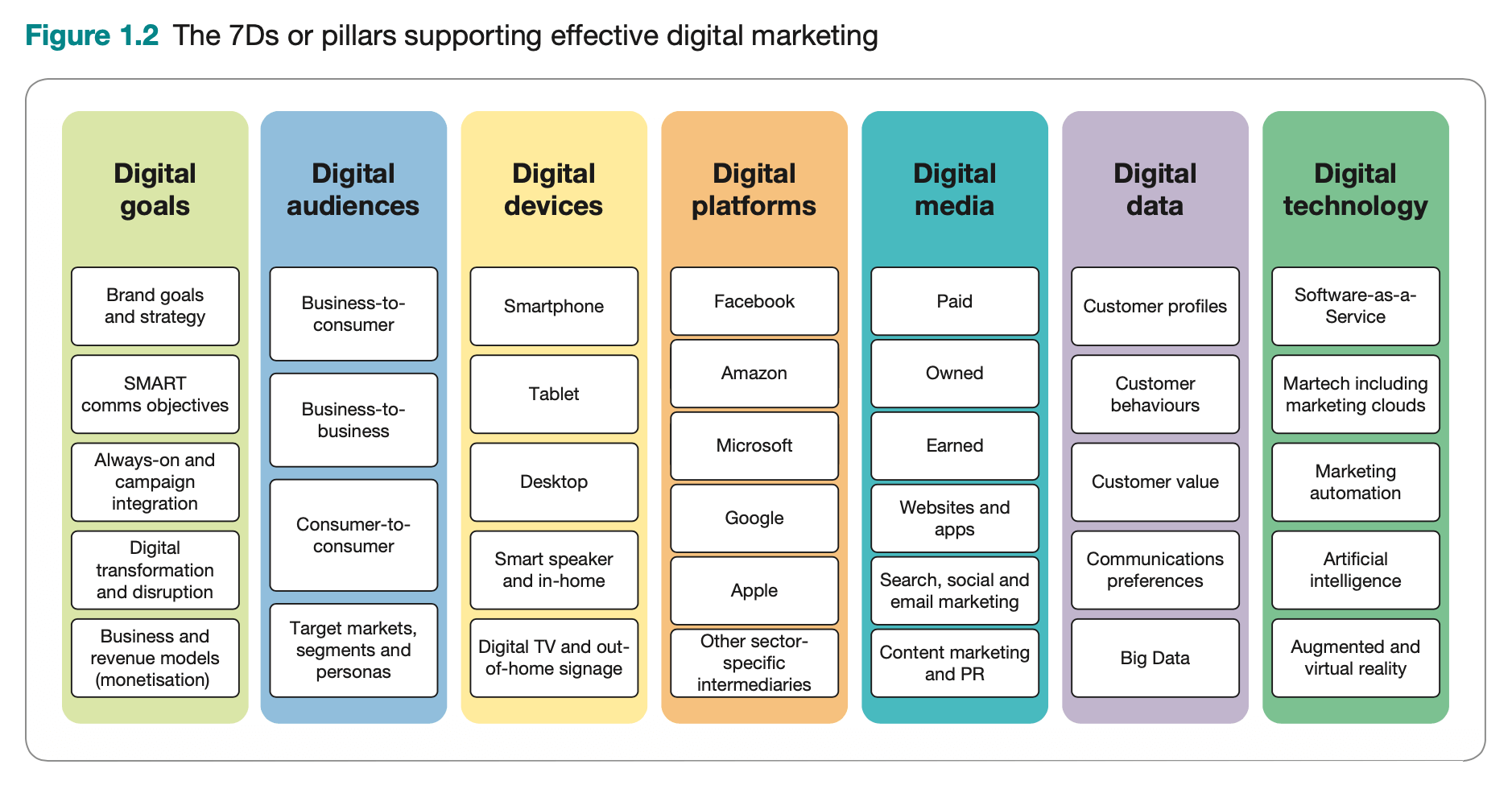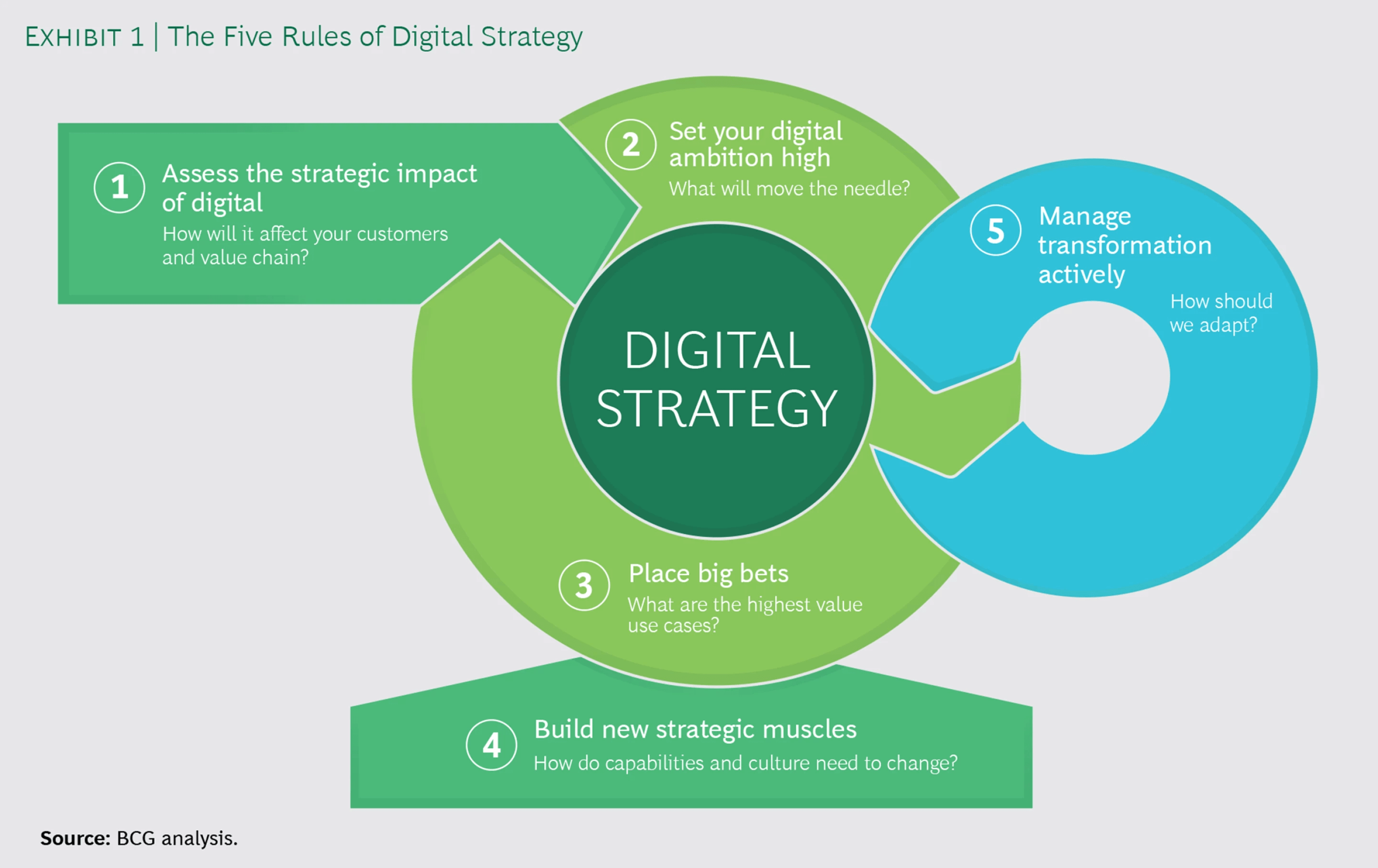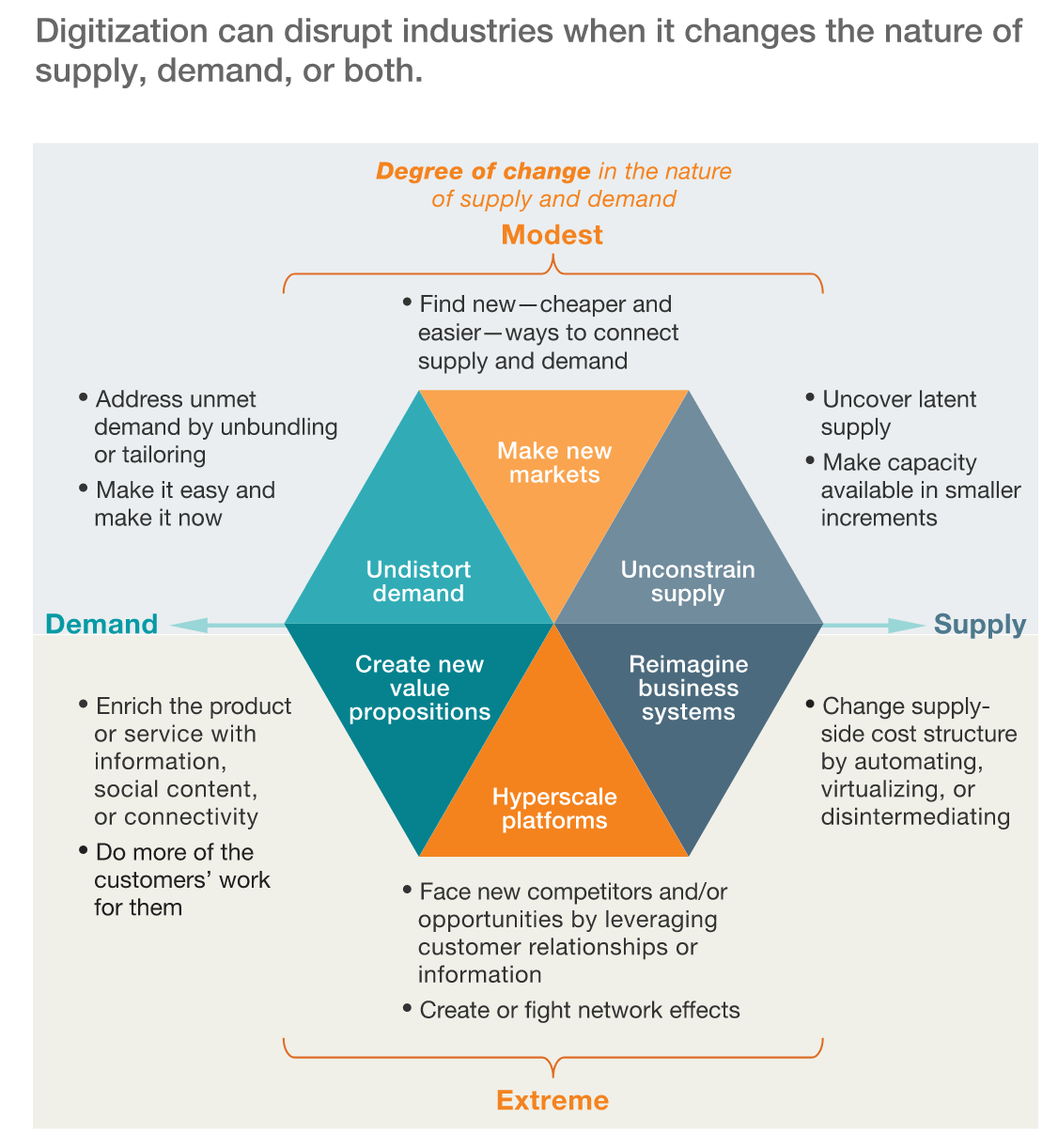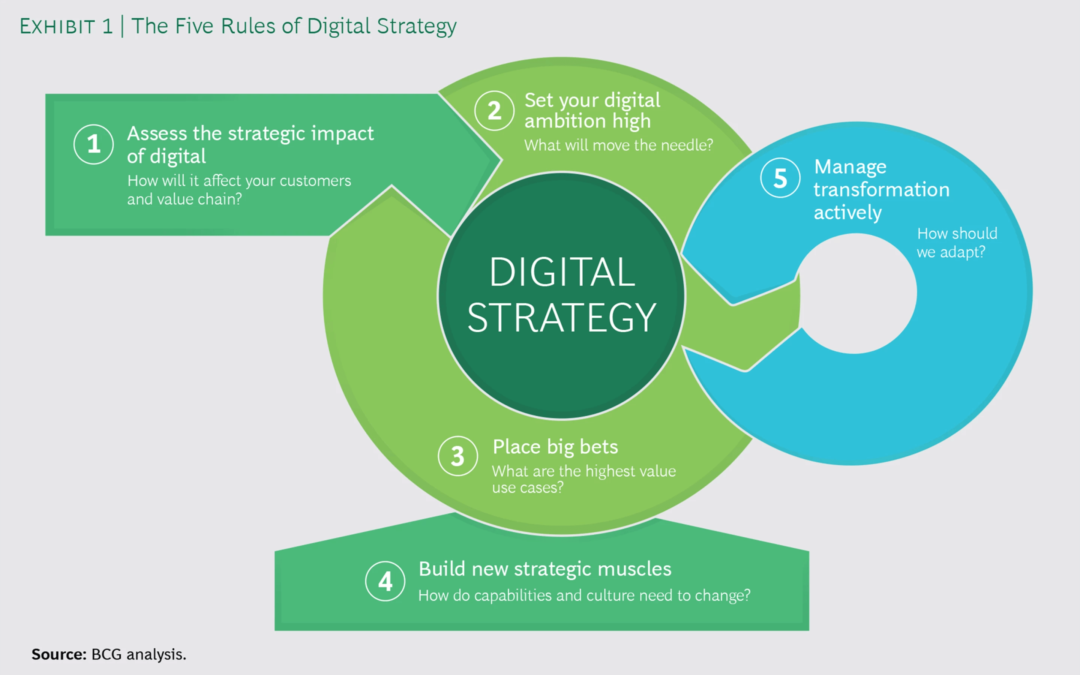An introduction and examples of using a planned approach to business digitalization with examples
In this article, you will learn what should be included in a digital strategy for a business and how to set goals and structure it. We will also explain the difference between a digital marketing strategy and cover some examples of digital strategy.
What is digital strategy?
A digital strategy defines an organization’s priority initiatives for future investment in digital technology to make a business more competitive by digitalization of its processes and review of its business model. It has a broad scope, covering how digital technology can support business goals across the business.
Technology analyst Gartner (2023) highlights this in their definition of digitalization where they emphasize a focus on improving business model rather than process. However, for me, digital strategy should consider both digitalization of both business processes and business model innovation.
Although ‘digital strategy’ usually focuses on technology, it’s important that it covers practical implementation issues of managing data and resources to manage the change when introducing technology. That’s why digital strategy often involves reviewing digital transformation strategy.
The 7Ds of digital marketing that your digital strategy should consider
As part of defining the scope of opportunity when using a strategic approach to digital marketing, it’s helpful to think about which digital audience interactions we need to understand and manage through marketing communications. Digital marketing today is about managing many more types of audience interaction than simply a company website or email marketing. It involves harnessing all of these other ‘7Ds of managing digital marketing interactions’ which are shown in the visual below

The marketing activities that relate to the 7Ds that should be reviewed as part of a strategic approach, that are explained in more detail in our article defining what is digital marketing are:
- Digital goals.
- Digital audiences.
- Digital devices.
- Digital platforms.
- Digital media.
- Digital data.
- Digital technology.
What are the goals of digital strategy?
The overall goal of a digital strategy is to improve an organization’s business effectiveness. It should be aimed at both increasing efficiency AND effectiveness.
Although a digital strategy may be used as shorthand for ‘digital marketing strategy’, a full digital strategy or digital transformation strategy should define how to improve different business functions including:
- Marketing, including digital marketing
- Sales, through supporting E-commerce sales or digitally-assisted sales
- New product development
- Product manufacture
- Supply chain management including procurement
- Other operational business management functions
At Smart Insights we focus on advising businesses in improving Marketing effectiveness with an emphasis on digital marketing. Within my book Digital Business and E-commerce Management we cover all these aspects of digital strategy.
How to create a digital strategy
The process for creating a digital strategy is similar to other type of strategies which involve a basic process of situation analysis and performance review, strategy creation and implementation. At Smart Insights, our RACE digital growth strategy process recommends these three stages for digital strategy creation:
- Opportunity – Situation review, covering an audit of digital maturity including current effectiveness of digital technology, media and data and vision and objective setting to create the business case and set targets
- Strategy – Reviews the strategic options and selects the priority digital initiatives
- Action – The plan for implementing the strategy as a series of 90-day plans
In their article the five rules of digital strategy, the Boston Consulting Group recommendations fit within this OSA process, they are:
- Assess the Strategic Impact of Digital. They say: “Good digital strategy starts with a rich understanding of the competitive environment and how it’s likely to change”.
- Set Your Digital Ambition High. This highlights the need to energize the organisation to achieve digital transformation.
- Place Big Bets. They recommend focusing on two or three of the most valuable use cases to give greater clarity and deliver the best results. They suggest that it’s important to manage priority initiatives as a portfolio and roll out the ones with short-term impact first.
- Build New Strategic Muscles. This references the need to develop digital talent and skills within an organization and apply digital within existing strategy processes.
- Manage Transformation Actively. This suggests the benefit of developing a digital transformation programme.
This visual summarizes the overall process:

Examples of digital strategy
A good example of a business implementing a digital strategy through digitalization is where Adobe transitioned from its physical design software to its Creative Cloud online cloud service. This involved both review of its business model and improving process efficiency, for example through updates to billing and software updates.
Digital strategy is also adopted at a national level by governments to encourage businesses to innovate through adoption of digital technology and digital transformation projects. See, for example, the UK’s digital strategy.
In their article, BCG gives these examples of setting an audacious vision for digital strategy:
- The coffee company Starbucks embraced digital to make up for lagging same-store sales. They found new ways for customers to order and pay for their coffee by developing a mobile payment app and rolling out digital loyalty programs. Mobiles sales increased twice as fast as in-store sales.
- The car manufacturer Renault set, and achieved, a goal to drive a 25% increase in EBIT with its digital strategy. It introduced 15 pilot digital initiatives across all functions—from marketing through production—to understand where digital could give the greatest lift.
This video, from McKinsey consultants supporting this article on the Economic fundamentals of digital strategy, also with examples, provides an interesting framework for discussing approaches for digital strategy with students.
It focuses less on process digitalization and more on changes to business models that are made possible through digitalization. 
How can Smart Insights help support your digital strategy development?
Smart Insights membership is designed to help businesses in different sectors and of different scales rapidly review their digital strategy and then develop and implement a digital transformation plan focusing on digital marketing.
We recommend starting by downloading our free digital maturity review which can be used to assess opportunities and weaknesses and set targets for improving your capability.


